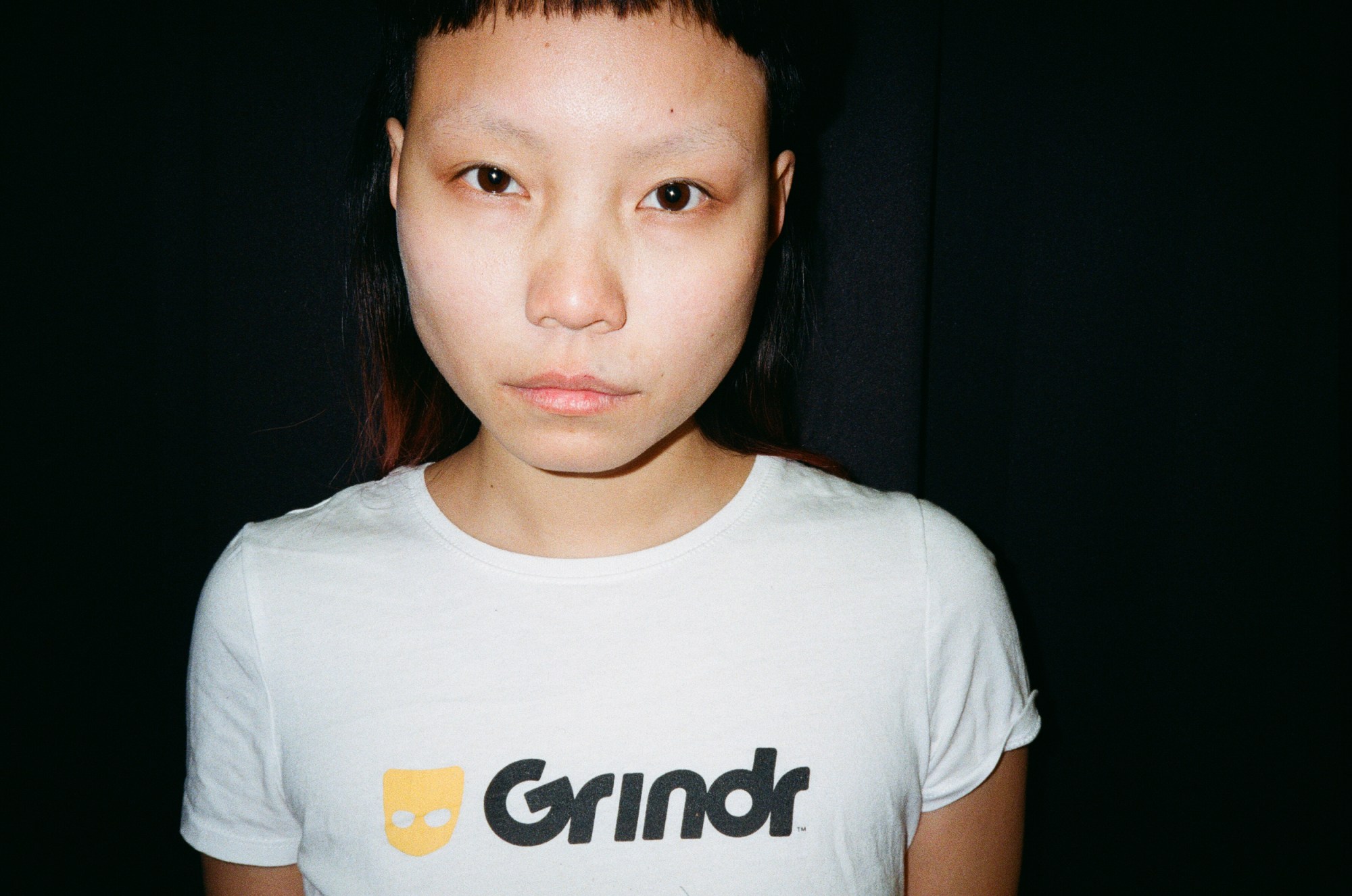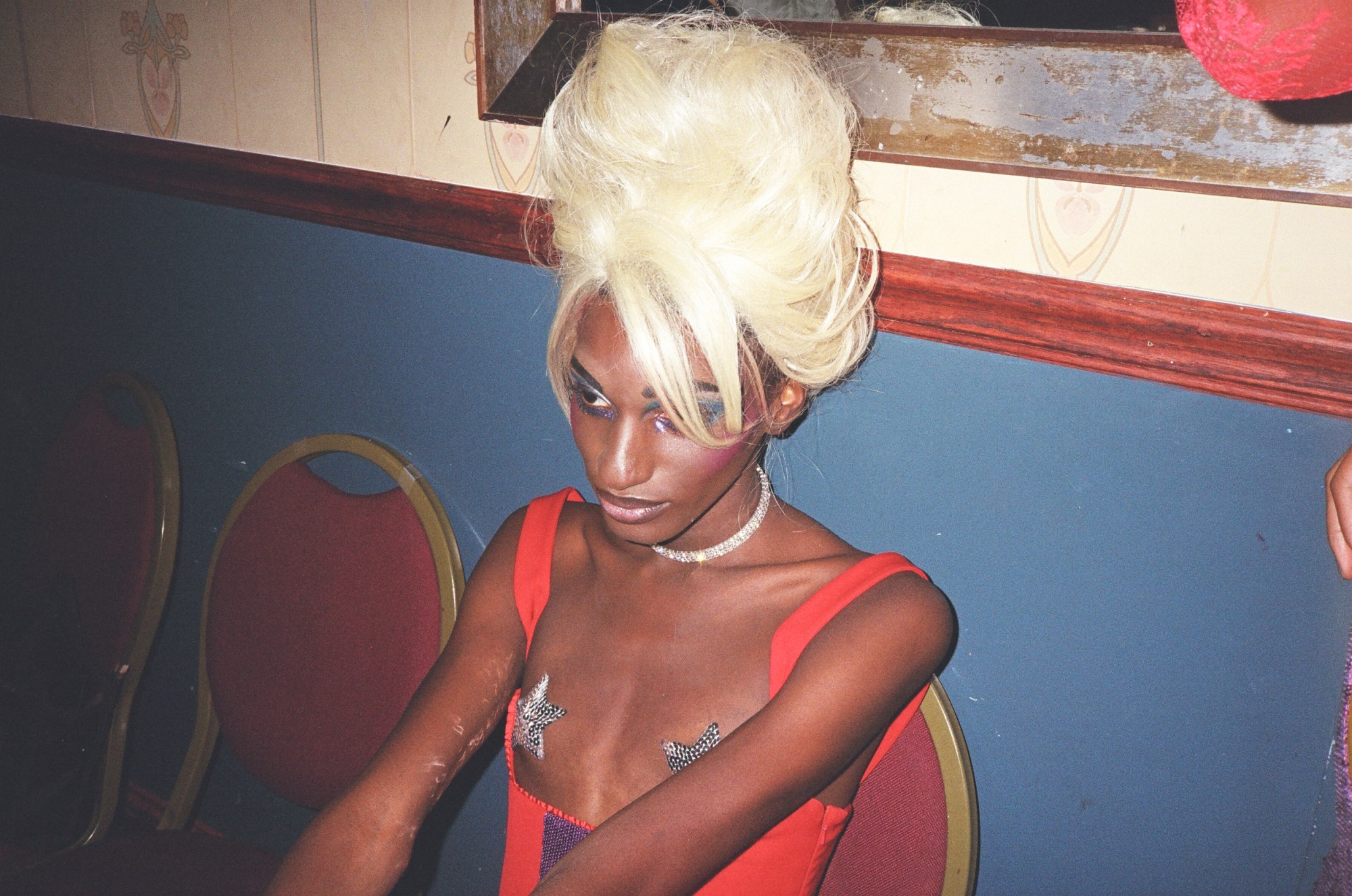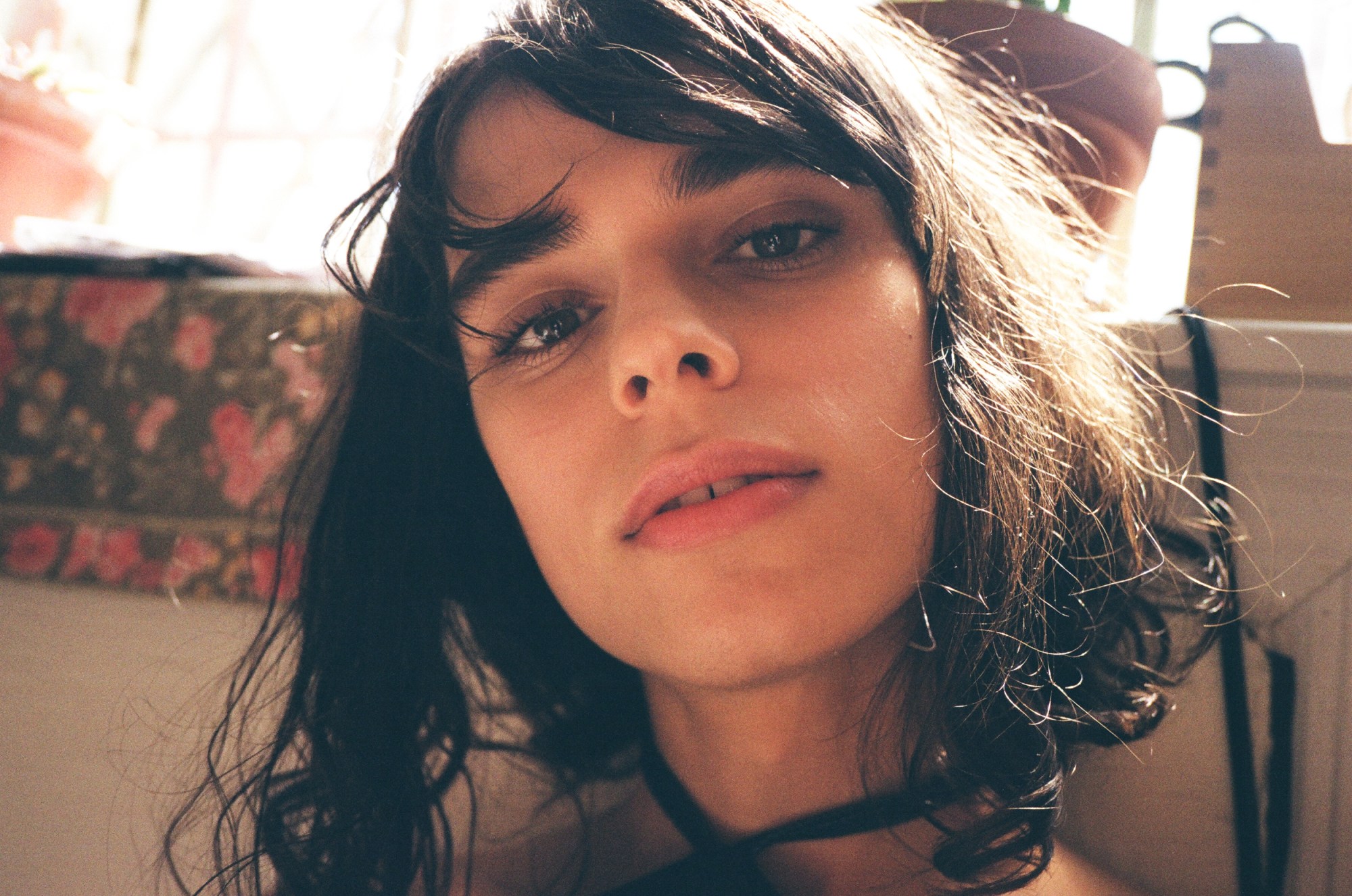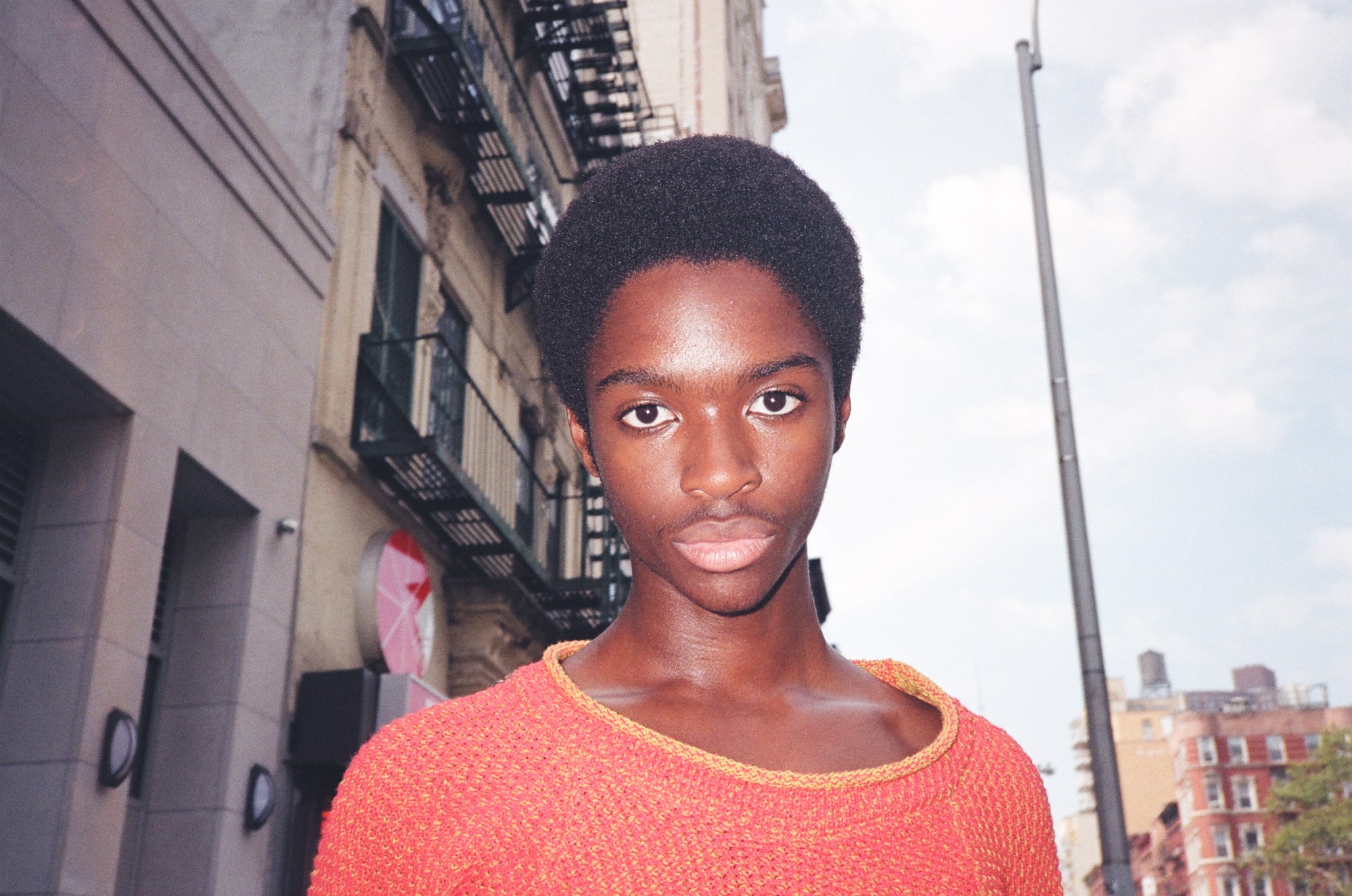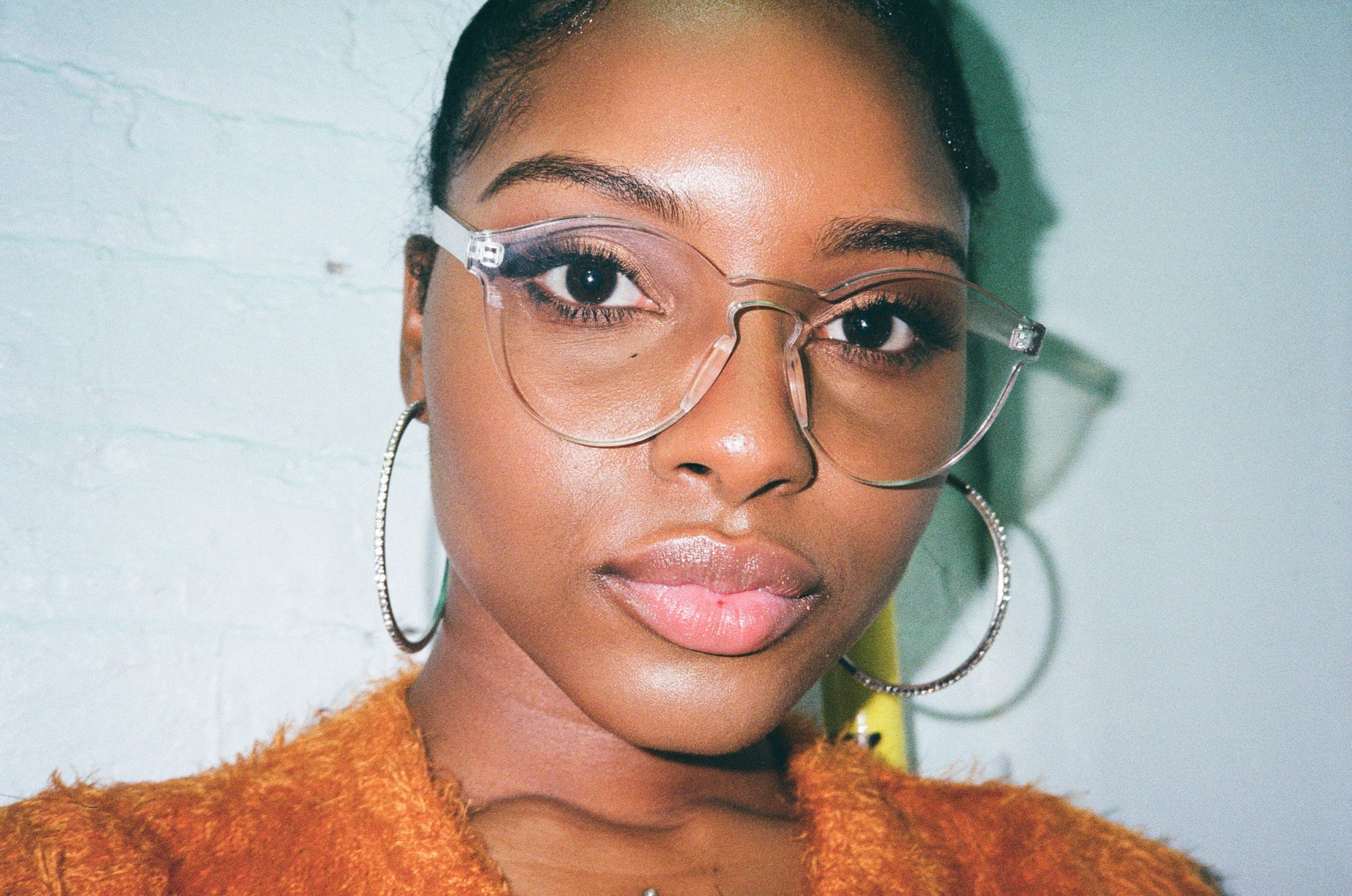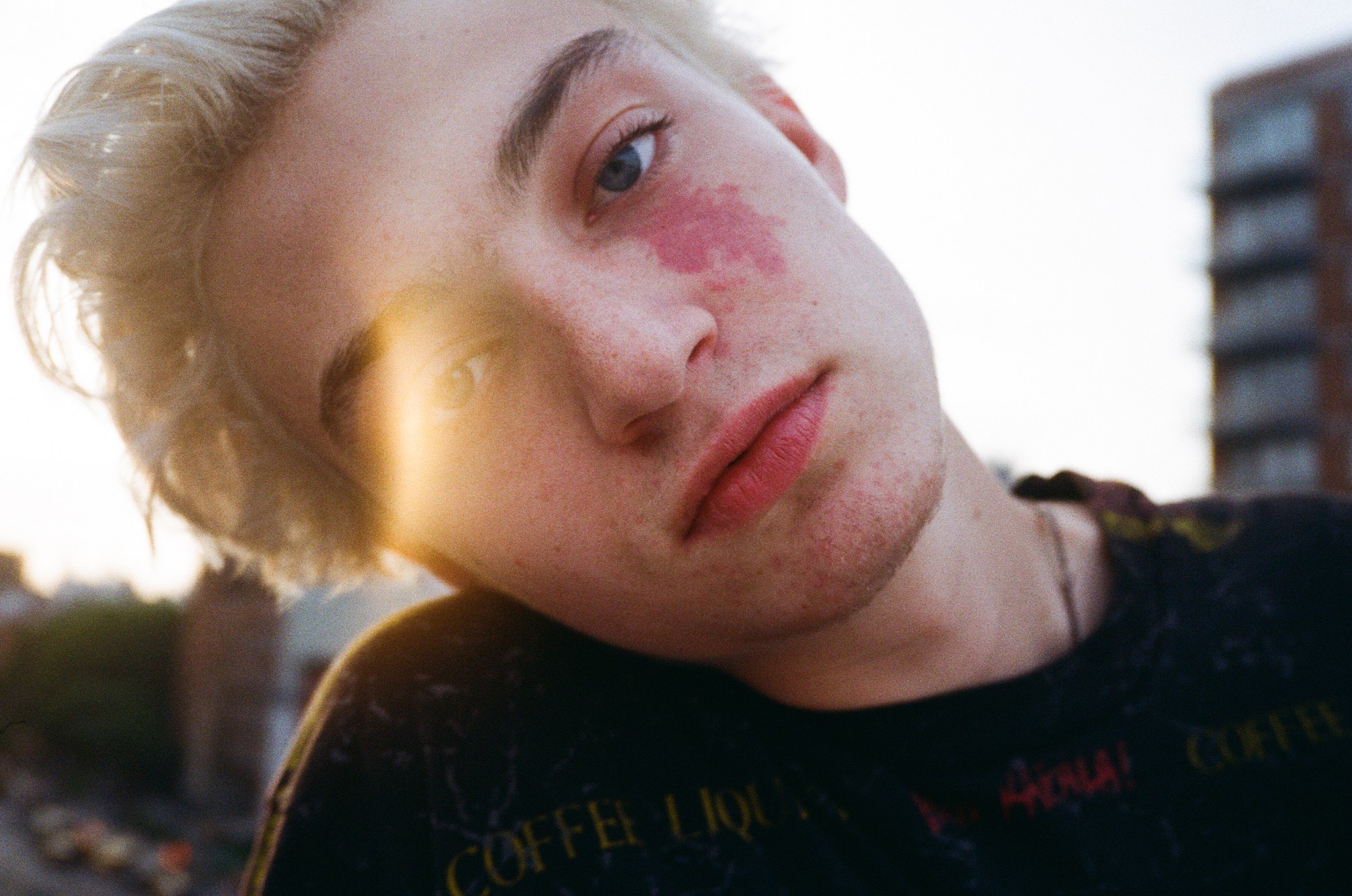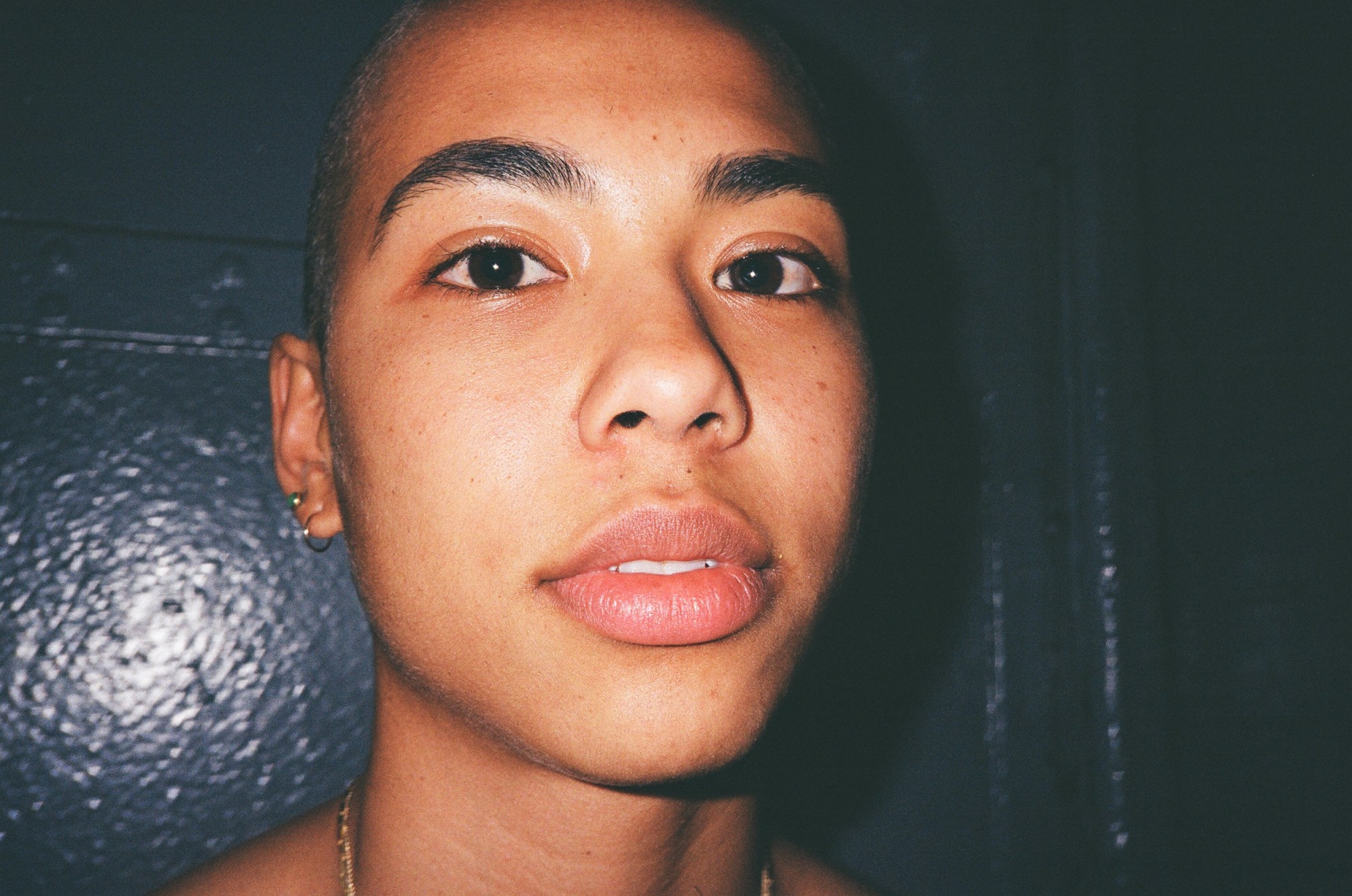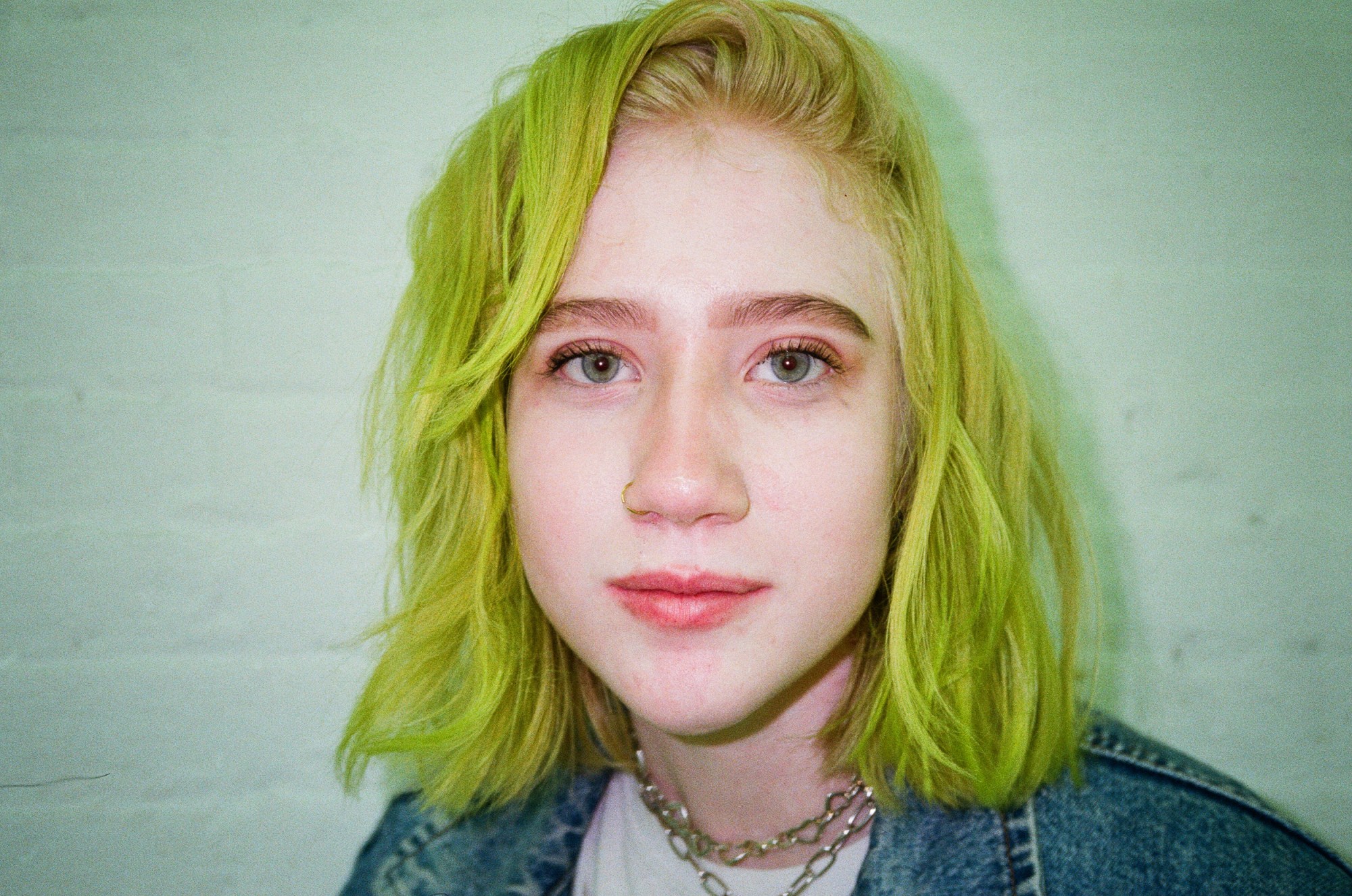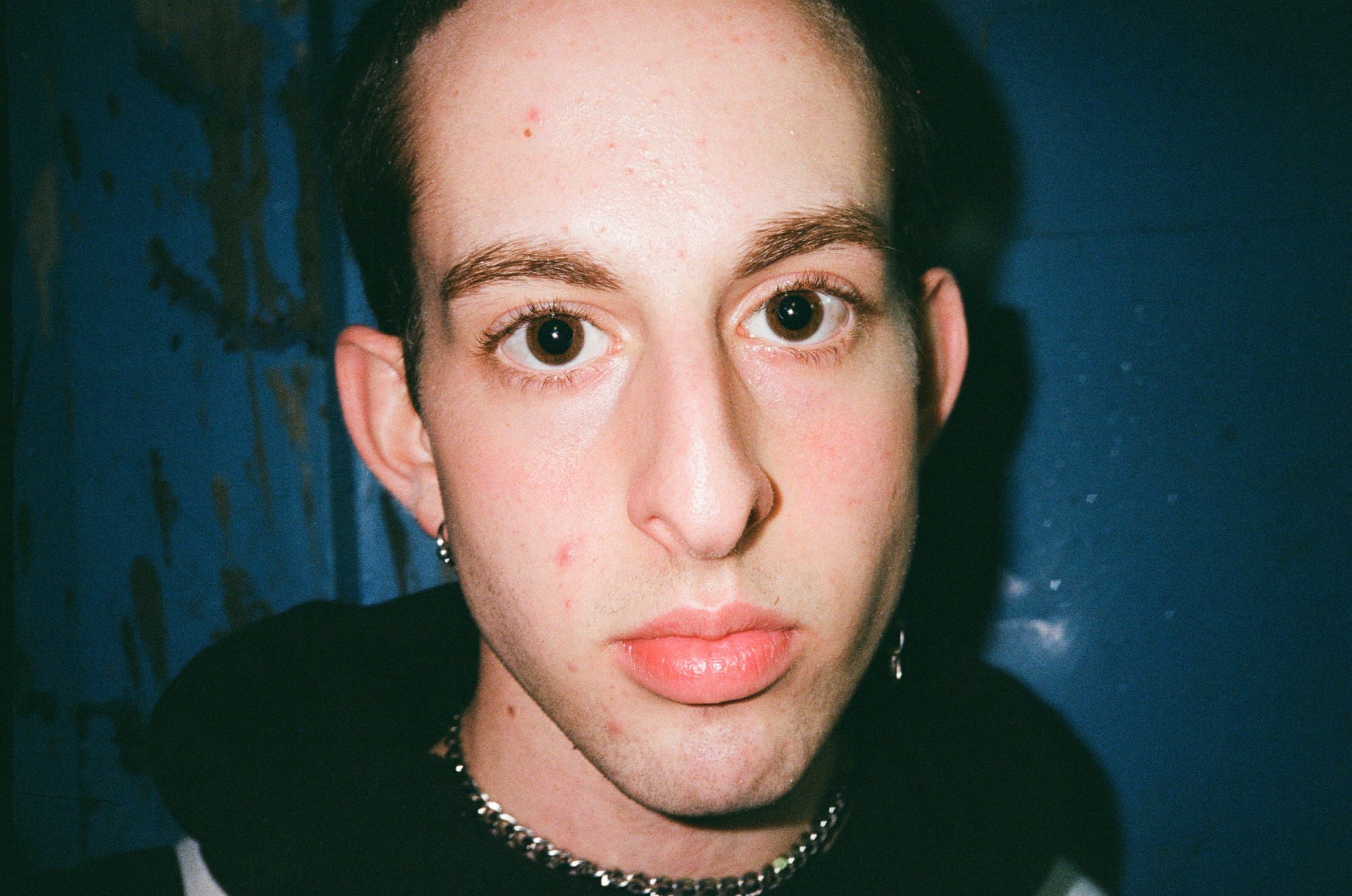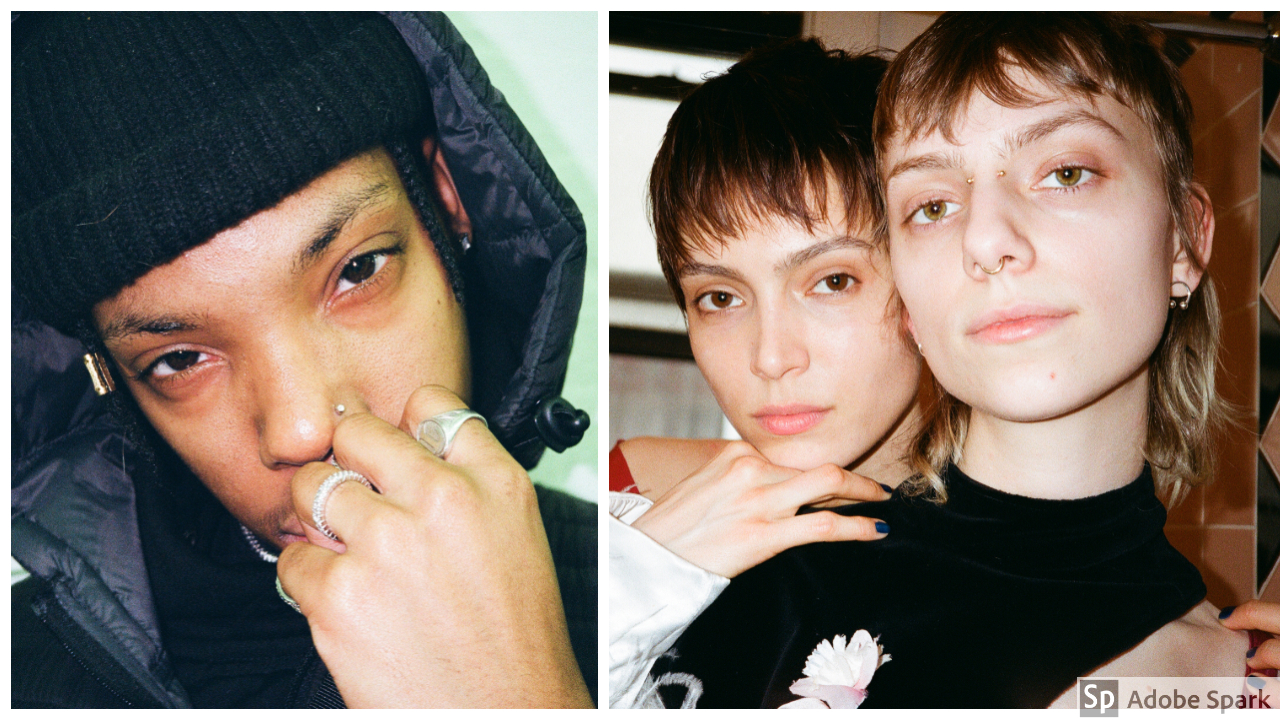A lithe nude body draped over the limbs of a leafless tree. Two lovers in a cloudy bathtub trimmed with stained salmon tiles. A video of the artist shaving her head in the mirror. Not exactly scenes from Sex and the City, the cosmo-fueled sexcapade series that informed Marie Tomanova’s idea of America when the now NYC-based photographer was a teen living small-town Czech Republic, binge-watching burned DVDs shipped from the United States by a friend’s cousin. And definitely not what she found when she first moved to America — specifically, to Greensboro, North Carolina.
“When I first arrived in the United States to au pair, I was picking out which family I will be with,” she recalls. “There was this family in Greensboro, North Carolina, and I was like, ‘Why not? It’s the same everywhere in the United States. I’m going to North Carolina!’ I had no idea!”
Tomanova’s new exhibition, aptly titled Young American, is an ode to the young creative community she eventually found in New York City. It comprises over 200 portraits, from models like Jazzelle Zanaughtti to students she stumbled across on Instagram or met at gallery openings. They’re shot in bedrooms, bathrooms, nightclubs, and the streets of New York City. Young American is proof of youth’s power to amplify issues like Black Lives Matter and #MeToo, and the equally important power to just be — be young, and be unique. But the power of youth revolt isn’t new to the age of Instagram hashtags, nor is it confined to America’s borders. The ideological revolutions of the 1967 Summer of Love in San Francisco, the events of May 1968 in Paris, and the 1989 Velvet Revolution in Prague can all contextualize the struggle playing out stateside.
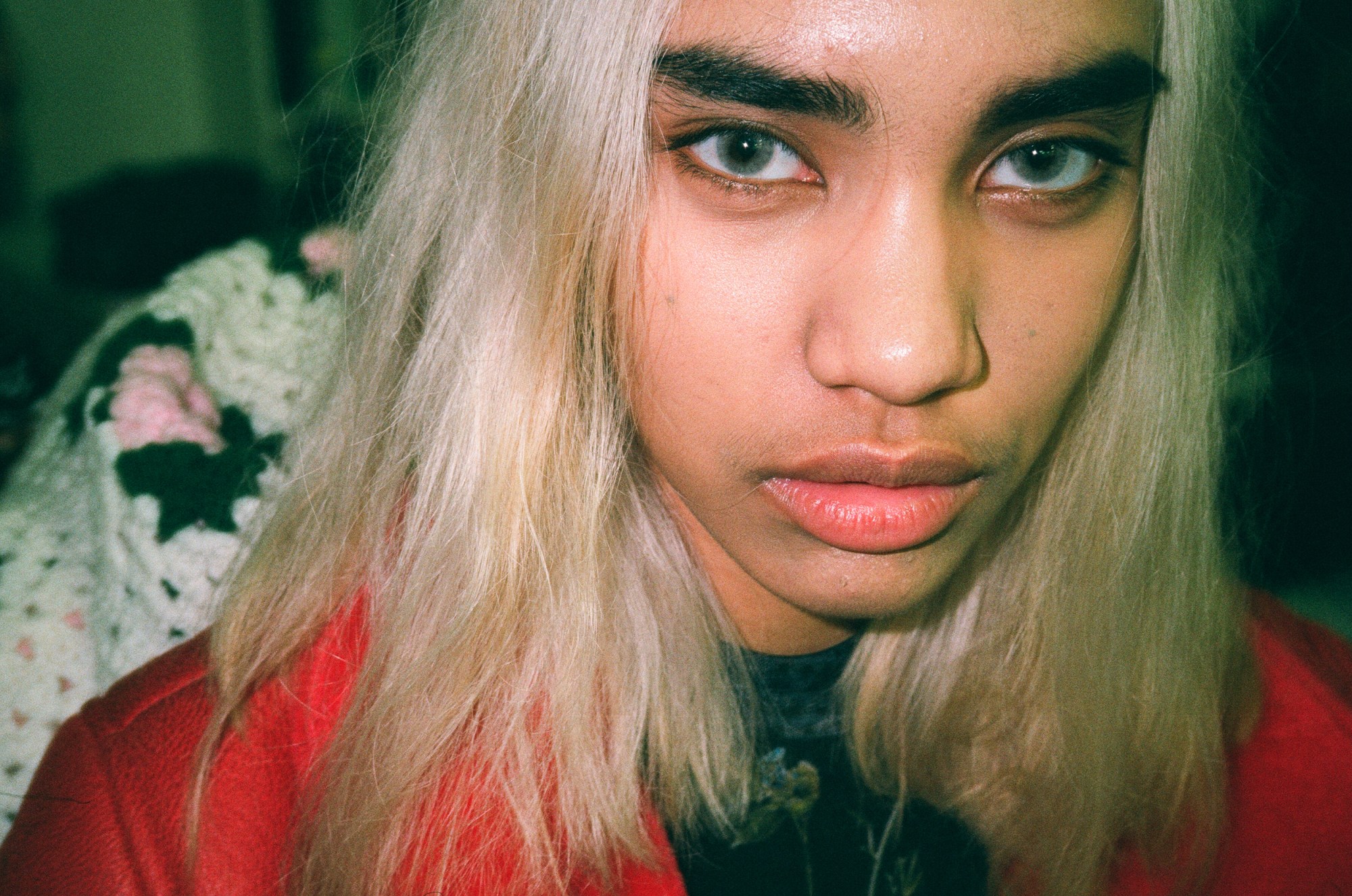
“I’m even now just discovering through these young people what America really is,” Tomanova says of the kids living their identities and being political in a time when “identity politics” is a dirty phrase. “It’s a whole different America than I imagined, but it’s an America that I’m really glad exists… It’s not Trump’s America — this is the real America.” The American Dream isn’t a fixed destination; it’s subject to the whims of government, and shaped by the wonderful people we meet en route.
What did you think America was like before you came here?
When I think about it now it’s really funny. I used to obsessively watch Sex and the City when I was like 16 and 17. My best friend had cousins in the United States, and they would burn it on DVDs and ship it to her, otherwise we wouldn’t be able to get it. I was watching it like crazy. But when I came to the United States, and especially to New York, it’s nothing like that of course. When I first arrived in the United States to au pair, I was picking out which family I will be with. There was this family in Greensboro, North Carolina, and I was like, ‘Why not? It’s the same everywhere in the United States. I’m going to North Carolina!’ I had no idea!
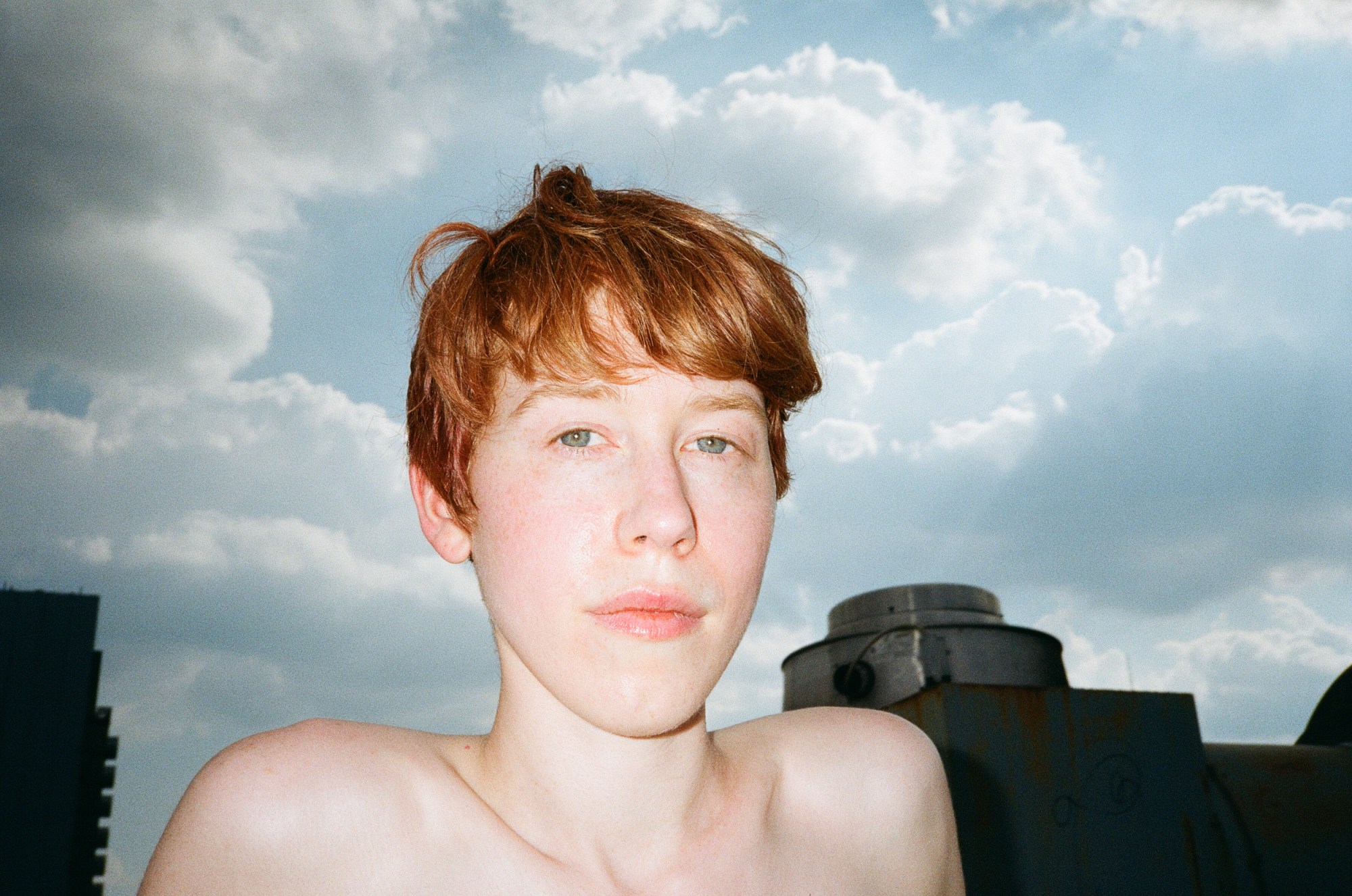
What inspired you to start making the Young American series?
I think it all happened because of me coming to America as an immigrant. I had certain ideas about what America was, and when I came over here it was not really anything like I imagined! That was exciting but also a little disappointing and confusing as well. After being in NYC for a while I started to photograph these young kids. I realized that is the America I can relate to. It’s all these young people who have a voice, and they’re all really inspiring. They have their voice on Instagram and social media, and they talk about issues like #MeToo and gun control. They don’t let these issues drop and be forgotten the week after they’re written about. That’s what America is nowadays. It’s youth with a voice and power.

How did you connect with such a diversity of young people? More importantly, how did you establish honest emotional connections?
I would find people through events, or Instagram, or we would connect through mutual friends. When I would go photograph them, I also realized that most of the time I talk with them, and shoot less than half of the time. I really love to hear people’s stories and I love to know where they’re from, where they came from, what their dreams are, and what is important to them. That’s a big part of establishing intimacy. A lot of these people really opened up and let me in. There’s a special something in the photos, in their eyes, that is very visible and important. The body of work is really just my America. It’s my vision of America, it’s my vision of the American Dream, and it’s me really finding in America what I wanted and dreamed of.
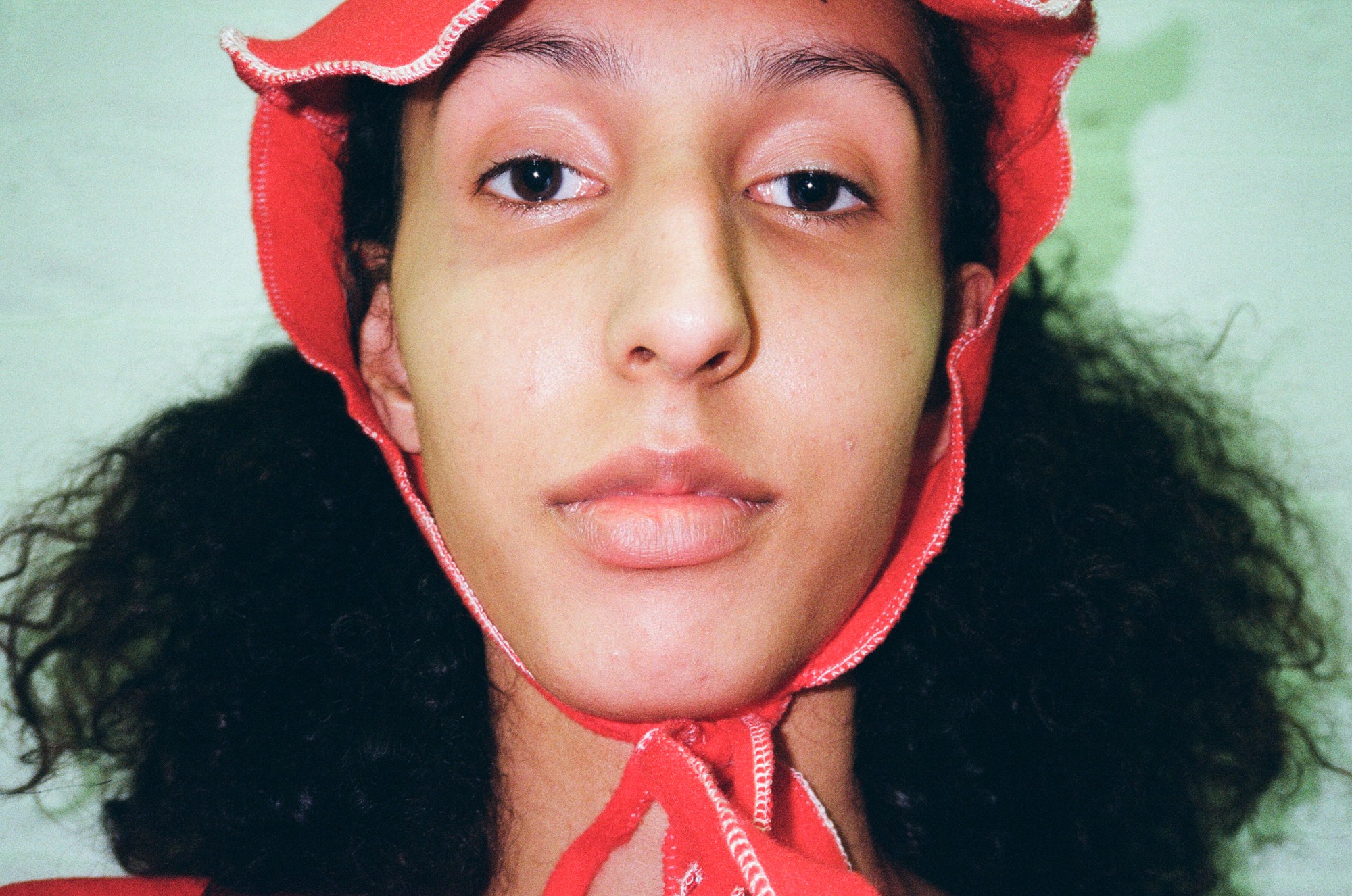
I last saw your photos at the Museum of Sex’s NSFW Female Gaze show. Just this morning I read that they had taken all the advertising for that show off the MTA buses. Why is nudity and the female body a common thread in your photos?
I was really excited when I got invited by Lissa Rivera and Marina Garcia-Vasquez to be a part of that show. For the first time, I was able to show the nude work that was really nude. For other galleries I have to pick out works that are not that explicit. At the Museum of Sex there was a lot of freedom, which felt very liberating.
I started to take self-portraits because I saw Francesca Woodman’s show at the Guggenheim, which was a really inspiring moment. I studied painting in Czech. I had a bit of a hard time because there are still far too many male figures in leading positions in the art schools. Female voice and female identity is not really that valued. I would never be able to shoot this kind of work and not be seen as just a sexual object, or dismissed because the work is ‘just sexual.’ After that I came to America and I said I was never going to paint again. When I saw Woodman’s show at Guggenheim, I was like, ‘Wow, why have I never tried photography?’
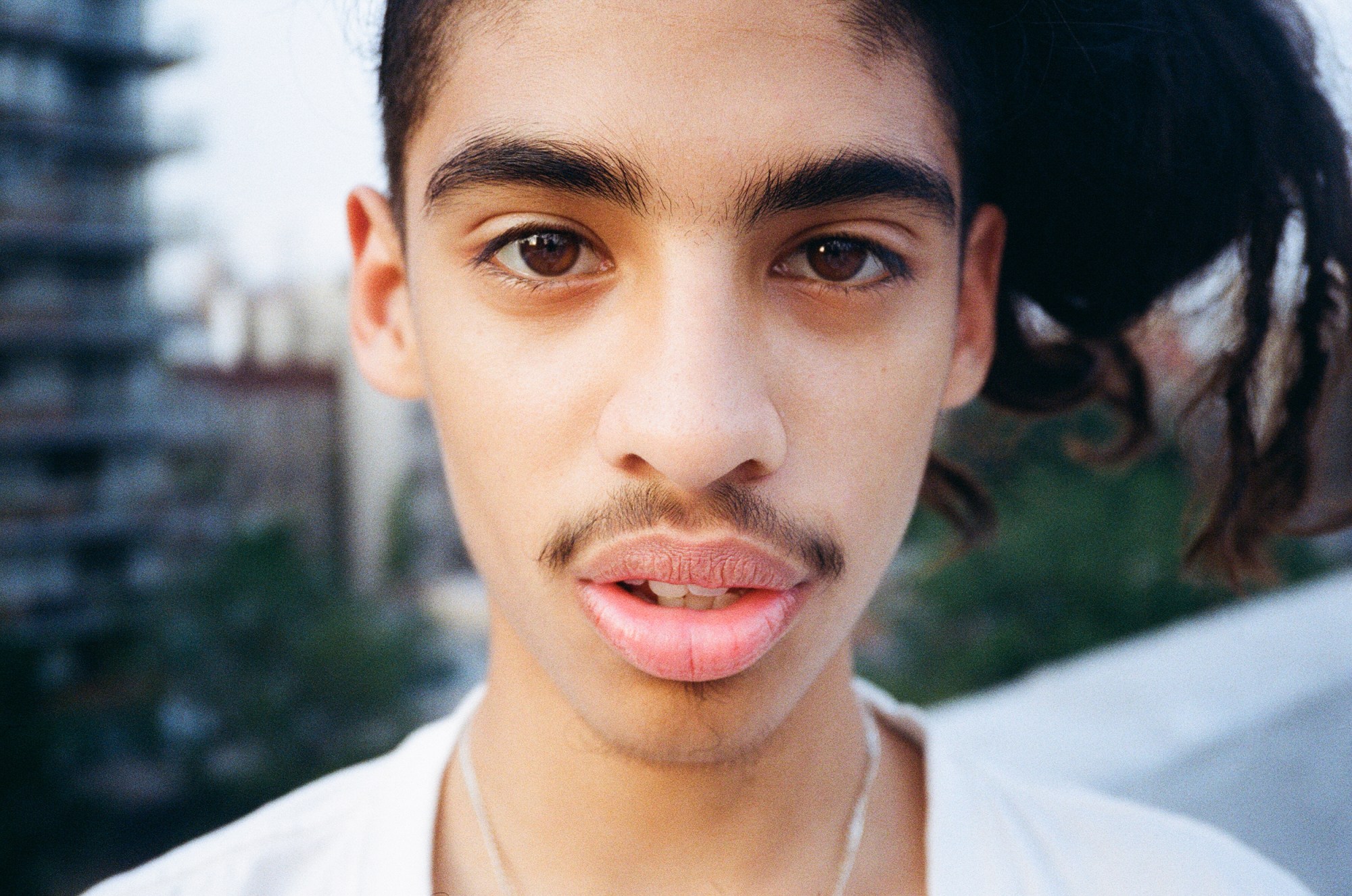
How did you start exploring photography yourself?
I did a couple of photography classes and the professors were really supportive. It was about me seeing myself in this new environment; this American landscape. I left my little town, I’m living on the other side of the world, and it’s still me. I had numerous times where I felt like I was losing my identity and not knowing who I am. I came to North Carolina and nobody knew me — I could be anything I wanted. Then I moved to New York and nobody knew me either. You can take on different personas. But at that moment, it’s like, ‘Who am I really? Where do I fit into all of this?’ The self-portraits helped me ground myself and understand myself a little better. Sexuality, of course, is a theme in it, but I would say it’s even more about identity, and about immigration in a way. Nature was about coming back to my youth. I spent my whole childhood running around fields, in the grass, climbing trees. It was finding my identity in a whole different part of the world.

Moving to New York City can be both liberating and frightening because of how anonymous you are. How did you navigate this while trying to break into the art world?
When I came here, because I didn’t know anybody, I just felt like it was me and the space. It was very anonymous, which was great for me because I could just walk through the city and feel the energy of it. The longer I am here, the more people I know, and in the small art circle everybody knows everybody. It was important for me to be able to connect with people through photography. I got a chance and a reason to meet people and photograph them, and talk to them, and make friends. That really helped me to have a home in New York City. I’m from a tiny town — it has like 6,000 people. It was really strange for me in New York City to go out and not see anybody I knew for a week, or a month. Now I go out and I meet all these people, and that really makes me feel at home.
“Young American” is on display New York’s Czech Centre from June 28 – August 10, 2018.
